Did you ever think?
How do brands always appear at the top of Google search results when you need them? The answer is PPC advertising and Google Ads. Getting your business noticed online is very important in the competitive digital landscape.
Whether you’re a small business owner, an aspiring digital marketer, or a freelancer building your online presence, knowing how to set up a Google Ads campaign can unlock targeted traffic, generate quality leads, and boost your sales.
This 2025 beginner’s guide will take you from zero to launch with clarity and confidence. By the end of this article, you’ll not only understand how to create a Google Ads campaign but also how to optimize it for maximum ROI using the right Google Ads campaign strategy and tracking Google Ads metrics.
What is Google Ads?
Before jumping into how to set up a Google Ads campaign, first you need to learn about what Google Ads is.
Google Ads is one of the powerful way to get your business noticed by clients online. Google Ads is Google’s online advertising platform that allows you to display ads on Google search results, YouTube, Gmail, and across millions of websites in the Google display network. It operates on PPC model which means you only pay when someone clicks your ad.
Working with Google Ads is not very difficult but it takes time to become an expert. You can promote products, services, apps, and content with Google ads and reach your audience in digital marketing efforts. It is a great starting point for Google Ads for beginners looking to build an online presence.

How to Set up a Google Ads Campaign
We’ll go step by step from signing up to getting your campaign live. I’ll walk you through Google’s simple ad creation process and explain everything clearly so you can easily create a Google Ads campaign.
Step 1: Set up Your Google Ads Account (The Right way)
First, you need to set up your Google Ads account. If you are new user and go to ads.google.com and sign in using your Google account.
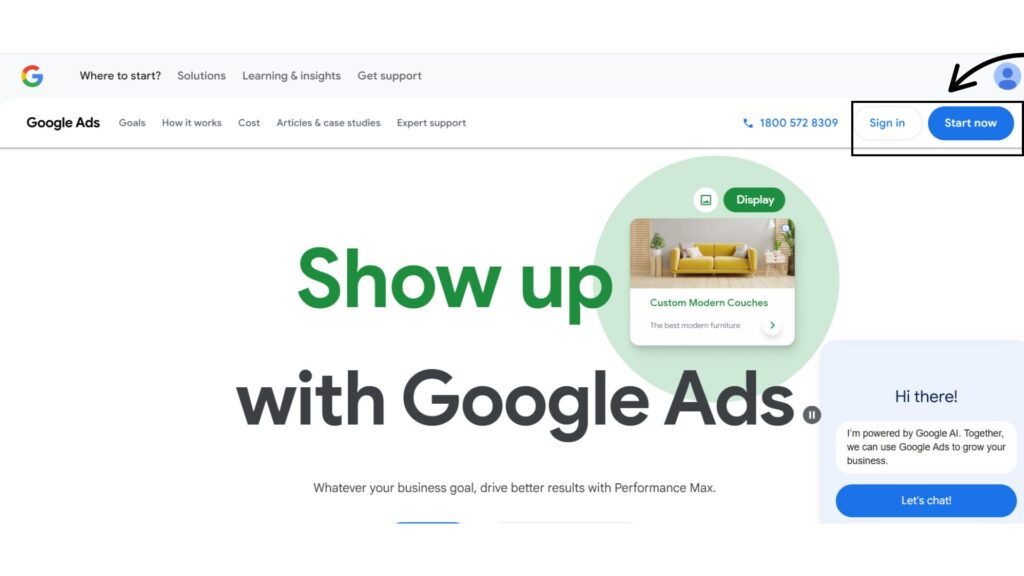
- Click on ‘Start Now’, enter business name, address, website URL, and time zone.
- The time zone is crucial as it determines when your daily budgets reset and when reports are generated.

Pro Tip: Setting up your account properly from the start helps avoid errors and gives you a solid foundation for campaign success.
Step 2: Create Your First Google Ads Campaign With Confidence
Now, let’s start the process of how to create a Google Ads campaign that gets noticed and delivers results.
A) Choose Your Campaign Goal
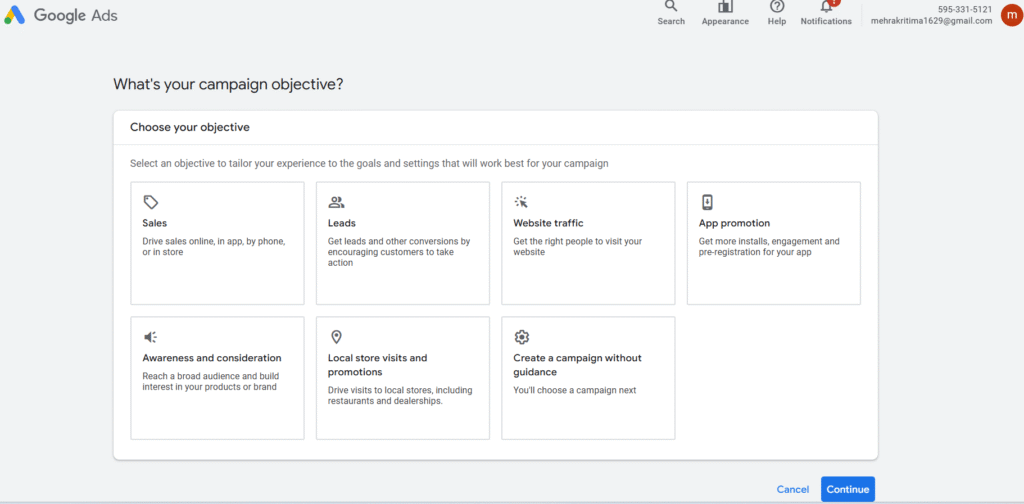
- Choose the campaign objective that suits your needs. This goal will determine your ad types, bidding strategy, and audience targeting.
- Next you need to select your campaign type. Your options include:
– Search (text ads on search results)
– Display (image/banner ads across the web)
– Video (YouTube ads)
– Shopping (for e-commerce products)
– Performance Max (automated across all Google channels)
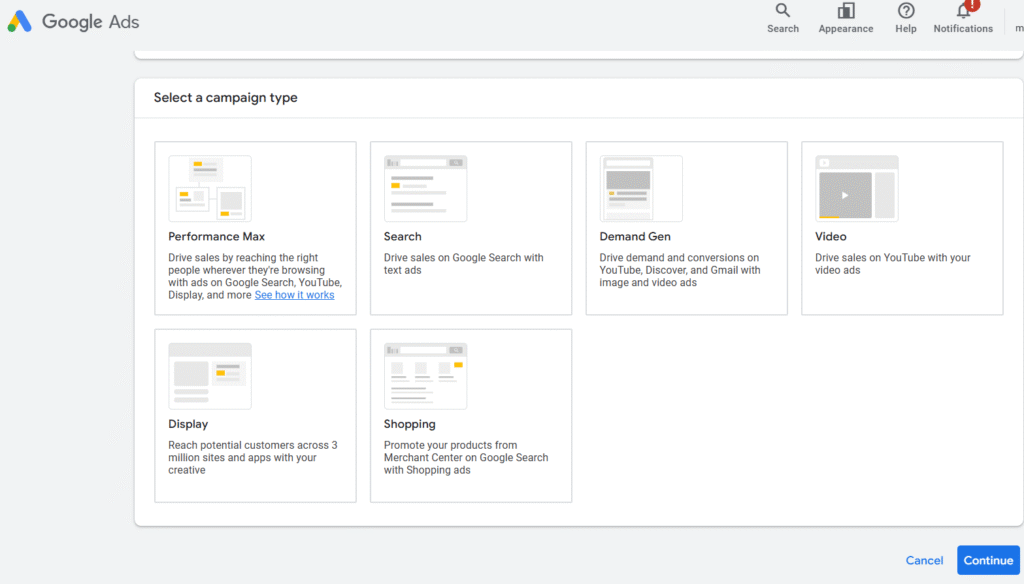
- Select your target location, language, device preferences, audience interests and demographics according to your target parameters.
B) Set Up Budget and Bidding Strategies
Here you need to set up budget and bidding for your Google ad campaign. In this stage you need to move strategically to get better results.
This is where your PPC campaign setup becomes strategic. Choosing the right bidding model ensures you are not overspending while still staying competitive.
For bidding strategy, beginners should consider “Maximize Clicks” to gain traffic and data then transition to “Target CPA” or “Target ROAS” once you have conversion data.
Pro Tip: Start with small budget and then scale based on performance.
Step 3: Crafting a Winning Google Ads Campaign Strategy
Once your campaign is set up, your next focus should be to craft a winning Google Ads campaign strategy.
A) Define Your Target Audience
In Google Ads you need to know your target audience exactly, who you want to show your ad to.
Focus on your audience location, interests, behavior, and intent.
For example:
If you are digital marketing trainer in Amritsar. Your target audience might be—
| Age Group | 20-35 |
| Location | Amritsar, Ludhiana, Jalandhar |
| Interests | Digital marketing, freelancing, online business |
| Behavior | Searching for “digital marketing courses near me” or “how to become a digital marketer” |
B) Choose the Right Keywords
The game of Google Ads depends on relevant keywords. Use keywords that your audience is actively searching for on Google. This ensures your ads appear when there is high intent.
For Example—
For a bakery in Delhi selling customized cakes their target keywords will be:
- “Custom birthday cake in Delhi”
- “Buy cake online near me.”
- “Eggless cakes in South Delhi”
Pro Tip: Don’t just target broad terms like “cake” — too generic, too expensive, and low conversion rates.
C) Organize Keywords into AdGroups
Group your keywords by theme so your ads are highly relevant to the search.
If you run an online bookstore, instead of putting all your keywords into one group, organize them like this:
Ad Group 1: Self-Help Books
- Buy self-help books
- Best self-improvement books
- Top motivational books
Ad Group 3: Children’s Book
- Kids story books online
- Buy books for toddlers
- children’s educational books
This structure helps create more relevant ad copy and landing pages which improves your Google Ads Quality Score and reduces CPC.
D) Use Keyword Match Types and Negative Keywords
Match types determine how closely a search query must match your keyword for your ad to appear.

- Broad Match: Reaches the widest audience. Example keyword = digital camera → could match: buy photography gear
- Phrase Match: Shows your ad when the search includes the exact phrase. Example– “customized cake” → could match: order customized cake in Delhi
- Exact Match: Ads appear only when the exact phrase is typed. Example– [customized cake] → only matches: customized cake.
Use of negative keywords prevents your ads from showing for irrelevant queries. For example— You run a paid yoga class, but don’t want your ad to show when someone searches “free yoga classes.”
Add “free” as a negative keyword.

This improves targeting and increases your return on investment by eliminating unqualified clicks.
Pro Tip: Align your keywords with Ad copy and landing page to boost your Google Ads Quality Score, lower your CPC, and increase conversions.
Step 4: Writing Effective Ads That Actually Convert
An ad is only as good as the words it uses. Let’s make yours count.
Key Elements of a Great Ad:
- Headline: Clear, benefit-driven, includes keywords
- Description: What you offer + why it matters
- Display URL: Easy to read and matches your offer
- Call-to-Action (CTA): “Get a Quote”, “Try Now”, “Sign Up Today”
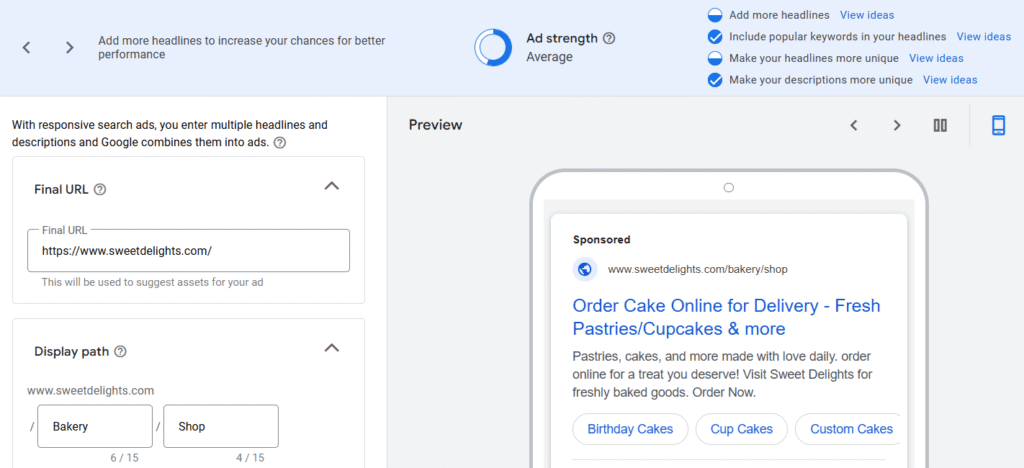
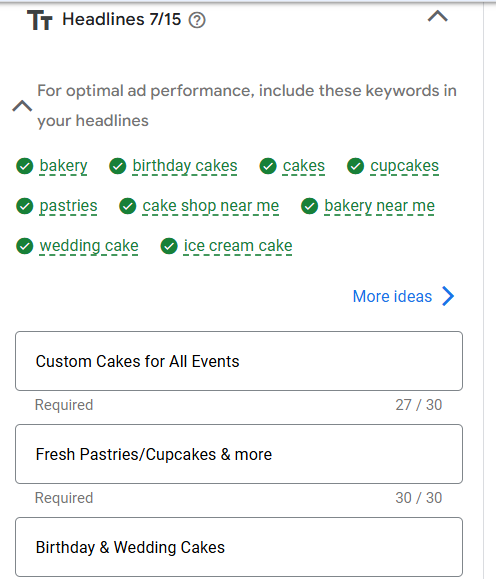
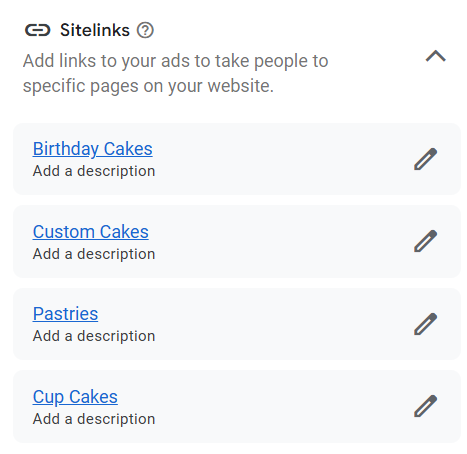
A/B Testing Basics
Run two variations of your ad copy to see which one performs better. Swap out one variable at a time (headline, CTA, etc.).
The Role of Google Ads Quality Score
Your Google Ads Quality Score (1–10) affects your ad position and CPC. It’s based on:
- Expected CTR
- Ad relevance
- Landing page experience
Higher scores = lower costs and better placements.
Step 5: Set the Ad Budget
- You can choose the ‘Custom’ option to set your daily budget based on how much you want or can afford to spend.
- Make sure to select ‘End Date’ and decide how long your campaign should run. If your campaign does well you can extend it or let it keep running.
- If this is your first time using Google Ads then it is best to start with small budget.
- Focus on learning Google Ads metrics and campaign behavior before scaling.
Step 6: Final Revision
You’re almost done! Before finalizing your ads, double-check the following:
- Is the destination link correct?
- Are there any spelling mistakes?
- Have you chosen the right geographic area?
- Does the budget match what you can afford?
Conclusion
Congratulations! You now have a clear, beginner friendly blueprint on how to set up a Google Ads campaign the right way in 2025. From account setup and strategic planning to optimization and scaling each step plays important role in PPC success.
With the right approach Google Ads for beginners can quickly turn into a powerful growth engine for your business. Don’t wait—start experimenting, learning, and growing today.
FAQ’s
Q1. Is Google Ads profitable?
Ans. Yes, Google Ads can be profitable but success depends on factors like your industry, ad quality, targeting, and budget. It works best when you track performance, optimize your campaigns, and focus on getting good return on investment.
Q2. What is Google Ads Quality Score?
Ans. Google Ads Quality Score is rating from 1 to 10 that shows how relevant and useful your ad, keywords, and landing page are to users. A higher score means better ad placements and lower costs. It depends on factors like click through rate, ad relevance, and landing page experience.
Q3. What is minimum budget for Google Ads?
Ans. There is no fixed minimum budget for Google Ads. You can start with any amount, it is best to begin with a small budget like ₹500–₹1000 per day and adjust based on results.
Q4. How to set up a Google Ads Campaign for beginners?
Ans. To set up Google Ads as a beginner:
- Sign up for Google Ads.
- Choose your campaign type (Search, Display, Video, etc.).
- Set a budget based on how much you want to spend daily.
- Select your audience (location, interests, and keywords).
- Create your ad with a catchy headline and description.
- Link to your landing page where users will go after clicking.
- Launch and monitor your campaign and optimize using Google Ads metrics.




